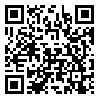Volume 13, Issue 3 (11-2020)
ijhe 2020, 13(3): 469-484 |
Back to browse issues page
Download citation:
BibTeX | RIS | EndNote | Medlars | ProCite | Reference Manager | RefWorks
Send citation to:



BibTeX | RIS | EndNote | Medlars | ProCite | Reference Manager | RefWorks
Send citation to:
Moeinaddini M, Mousavi S H, Isakhanbeygi Z, Heidari S. Allocating and prioritizing Karaj air quality monitoring stations by two stage approach. ijhe 2020; 13 (3) :469-484
URL: http://ijhe.tums.ac.ir/article-1-6472-en.html
URL: http://ijhe.tums.ac.ir/article-1-6472-en.html
1- Department of Environmental Science, Faculty of Natural Resources, University of Tehran, Karaj, Iran , Moeinaddini@ut.ac.ir
2- Research and Strategic Studies Center in Islamic City Council of Karaj, Karaj, Iran
3- Department of Environmental Science, Faculty of Natural Resources, University of Tehran, Karaj, Iran
4- Department of Monitoring and Evaluation of Environmental Pollutants, Karaj Municipality, Karaj, Iran
2- Research and Strategic Studies Center in Islamic City Council of Karaj, Karaj, Iran
3- Department of Environmental Science, Faculty of Natural Resources, University of Tehran, Karaj, Iran
4- Department of Monitoring and Evaluation of Environmental Pollutants, Karaj Municipality, Karaj, Iran
Abstract: (1894 Views)
Background and Objective: One of the most important goals for urban environmental management system is the monitoring of air quality. Allocating optimum air quality monitoring stations (AQMS), is a key factor in establishing effective and accurate air quality monitoring program. The objective of this study was to determine optimal allocation for AQMS in Karaj.
Materials and Methods: Based on two stages approach, at first, the suitability map was obtained by WLC method. For AQMS implementation, municipal districts were ranked. The extracted alternatives were graded using TOPSIS. In the next stage, the position of preferred sites were investigated by site visiting and detailed criteria. Finally, the AQMS locations were introduced.
Results: Ten suitable stations were suggested based on population and number of municipal districts. During the first stage important criteria such as distance from roads and street cross-section were weighted and standardized. The distance from roads and green space were the lowest and highest important criteria, respectively. The lowest and highest ranks for AQMS implementation were Nos. 9 and 3 districts, respectively. During the first phase 30 alternatives were obtained. At the second stage, 10 best alternatives were selected following field observation and considering implementation criteria (eg. distance from trees, cross section and pollutants emission sources).
Conclusion: In this study, at the first stage the preferred alternatives were determined. In the next stage the best alternatives for AQMS implementation were selected considering reasonable time and effort. The suggested approach could be used to implement AQMS for other areas.
Materials and Methods: Based on two stages approach, at first, the suitability map was obtained by WLC method. For AQMS implementation, municipal districts were ranked. The extracted alternatives were graded using TOPSIS. In the next stage, the position of preferred sites were investigated by site visiting and detailed criteria. Finally, the AQMS locations were introduced.
Results: Ten suitable stations were suggested based on population and number of municipal districts. During the first stage important criteria such as distance from roads and street cross-section were weighted and standardized. The distance from roads and green space were the lowest and highest important criteria, respectively. The lowest and highest ranks for AQMS implementation were Nos. 9 and 3 districts, respectively. During the first phase 30 alternatives were obtained. At the second stage, 10 best alternatives were selected following field observation and considering implementation criteria (eg. distance from trees, cross section and pollutants emission sources).
Conclusion: In this study, at the first stage the preferred alternatives were determined. In the next stage the best alternatives for AQMS implementation were selected considering reasonable time and effort. The suggested approach could be used to implement AQMS for other areas.
Type of Study: Research |
Subject:
Air
Received: 2020/10/14 | Accepted: 2021/02/9 | Published: 2021/07/18
Received: 2020/10/14 | Accepted: 2021/02/9 | Published: 2021/07/18
Send email to the article author
| Rights and Permissions | |
 |
This work is licensed under a Creative Commons Attribution-NonCommercial 4.0 International License. |





